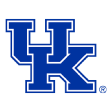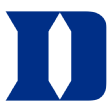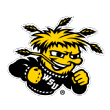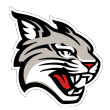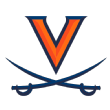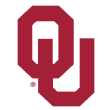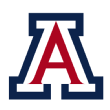Do Not Draft List: Top QBs lead
Repeat after me:
I will not draft a quarterback in Round 1. I will not draft a quarterba . . . . By this point, you know the drill. Each August, I write about the football players I will
not be drafting -- a “Do Not Draft” list, if you will -- and the top quarterbacks show up on it. I have nothing against Green Bay's
Aaron Rodgers or Indianapolis'
Andrew Luck. They’re awesome in many ways. They probably will be top fantasy scorers again. But that’s not exactly the best way to approach things with early draft picks or auction dollars. There’s more to consider. And in the first
and second round of ESPN standard scoring, 10-team drafts, I don’t consider them.
My annual “Do Not Draft” list certainly needs the appropriate context. We’re talking about value, but also positional depth and scarcity, and while Rodgers and Luck -- and who knows, perhaps
Peyton Manning one more time -- are all kinds of spectacular, I still like to construct a fantasy roster loaded with the flex-eligible options, running backs and wide receivers, in the early rounds. Perhaps you’re not a fan of Dallas quarterback
Tony Romo or the
New York Giants’
Eli Manning, but I’m definitely on board with choosing them after Round 7, when I’ve already secured a strong base of running backs and wide receivers. We know there will be injuries. Get more options than you need.
While I rank Rodgers and Luck as third-rounders, they’re obviously not lasting that long in ESPN average live drafts, which is where the comparison points enter for this project. A season ago, Peyton Manning ended up a crazy
fourth overall in average draft position, and Rodgers and New Orleans’
Drew Brees were going later in the first round, or close to it. I can’t do that. There are monster wide receivers still available there and important running backs. Look, you know about ESPN’s #MockDraftMonday, and I’ve tried selecting a quarterback early in mocks, and I never like my team. I like it with Carolina's
Cam Newton, certainly underrated now, joining my team in Round 8 -- or even better, Miami’s
Ryan Tannehill, a top-10 fantasy quarterback a year ago, in Round 11. That’s value.
The bottom line on my “Do Not Draft” list is that in most every case I certainly
would draft the player, but not at the cost I’m seeing in drafts and auctions. Value is key, just like statistics. Quarterbacks and tight ends just do not show up as top-10
value-basedselections, ever, due to the depth at their positions. It’s always running backs and wide receivers. Throw six or seven on your team right away and hope five are really, really worth it, then get your quarterback and tight end. There are myriad ways to construct a successful fantasy roster, and maybe you wish to go with the best tight end and quarterback with your first several picks. You could win. Or you could be hoping
DeAngelo Williams works out as a RB2. Could happen, I guess. Probably not.
For this year’s annual blog entry on who I am not drafting, I’m simply going in order of current
ESPN ADP.
Aaron Rodgers, QB, Green Bay Packers (seventh in ADP): Great player, great guy, terrible value. Get a great running back or wide receiver.
DeMarco Murray, RB, Philadelphia Eagles (eighth in ADP): Last season's numbers are not happening again, even in this potentially awesome offense. He could lose more than 100 touches.
Ryan Mathews and
Darren Sproles will be involved. I worry about injury. I’ll take Murray in the second round, not the first.
Andrew Luck, QB, Indianapolis Colts (12th in ADP): People occasionally ask me how the top scorers can be bad values. Add up the fantasy points for Luck plus most seventh-round running backs versus Broncos wide receiver
Demaryius Thomas or Cowboys wide receiver
Dez Bryantplus Newton/Romo/Eli Manning/Tannehill. You should know how this ends.
Rob Gronkowski, TE, New England Patriots (15th in ADP): I’m well aware he stayed injury-free last season and I applaud him, but he’s still a huge risk this early. We cannot simply disregard his past woes, his current September quarterback, the position depth or the fact he has never finished top-10 in value-based drafting. Giants stud
Odell Beckham Jr. is going a pick later. Take the sophomore and then
Tennessee Titans tight end
Delanie Walker in Round 12.
Russell Wilson, QB, Seattle Seahawks (22nd in ADP): I believe this point has been made clear. Let’s ignore quarterback for this exercise the rest of the way. Peyton Manning is going 23rd, by the way. Way too generous.
Jimmy Graham, TE, Seahawks (27th in ADP): There’s no way he puts up the numbers you want, that you covet, unless Seattle drastically alters its offense, and that’s just not happening. They run. Like, a ton. I do have Graham projected as the No. 2 tight end, but not this early.
Jonathan Stewart, RB, Carolina Panthers (43rd in ADP): I tried and just can’t do it. I originally ranked Stewart, who has made fantasy owners suffer for years and certainly not only because he was in an annoying time-share, in this region. I just can’t pick him here. How can we possibly project 16 games? I know all the reasons why people love him from brief glimpses last season, why they call him underrated, but I can’t trust him. The health, the goal-line looks, nothing. I have to choose him a round or two later or let someone else deal with it.
Todd Gurley, RB, St. Louis Rams (47th in ADP): I had to lower my rank on him as well, because I simply wasn’t choosing him in drafts. I want to win now. Today. There’s obviously major upside here, but the difference between Gurley and
Pittsburgh Steelers star
Le'Veon Bell, whom I rank first overall despite him missing multiple games, is clear: Gurley remains unproven and I think he’s going to miss more games than Bell, more than we think overall. In a dynasty format, I’m all-in on the exciting rookie, but as the fifth player on my roster for 2015, knowing how scarce reliable running back depth is, I’m not. Get
Tre Mason a few rounds later, because even when Gurley is ready, he’s not simply going away.
Seahawks defense (48th in ADP): You’re kidding, right? Fifth round? Over potential starting running backs in Dallas, Oakland, Arizona, Detroit, Jacksonville, etc.? That’s foolish. All kinds of foolish. This wasn’t even fantasy’s No. 1 scoring unit last season. I’m not saying these are the
Chicago Bears, because that’s a terrible defense, but take your defenses after Round 14. Always. I’ll leave out all the other defenses going in the top 100. There’s simply no justification, as is happening in ESPN ADP, to take the
Buffalo Billsbefore
Detroit Lions rookie
Ameer Abdullah -- none.
DeSean Jackson, WR, Washington Redskins (54th in ADP): Silly you, thinking the numbers he put up in his walk season with the Eagles would happen again. Way different offense, and Jackson isn’t a volume receiver. He makes big plays and yes, he did make them last season. He was top-20 at the position in standard formats, though how he does it is also an issue, with so many games of nothing. It’s just dangerous to rely on big plays for fantasy; he’s already injured and while I can’t measure this, I wonder about his motivation. The team is a wreck. Ultimately, Jackson, who correctly appeared on this list a year ago, has topped 63 receptions in one season, and I doubt it happens again. I have Jackson ranked somewhere in this area, but because of how I construct teams, I always choose someone else with upside, like Oakland's
Amari Cooper or wait a few rounds for Pittsburgh's
Martavis Bryant and Jacksonville’s
Allen Robinson.
Julius Thomas, TE, Jacksonville Jaguars (69th in ADP): I’m actually a little disappointed he got hurt because so many people had been taking him in the first seven rounds, and I never would. You know how nice it is when you’ve got a few players queued up and they don’t go before your pick? That seems to be happening a lot for me with regard to Thomas. I wasn’t selecting him. The busted finger will scare people away now, because he might miss September action, but make no mistake, the version we saw in Denver can’t possibly put up numbers with
Blake Bortles throwing to him, regardless of how great an athlete he is. Not big numbers. Before the injury, I had Thomas ranked 50 spots worse than this ADP for a reason.
C.J. Spiller, RB, New Orleans Saints (74th in ADP): How many times do you need to be disappointed by this fellow? Honestly, haven’t you had enough yet?
Mark Ingram is the starter, in the traditional running back role. And they’ve got Brees, and you know he’s throwing plenty. I’ll surely consider Spiller, currently on the shelf after minor knee surgery, in PPR formats, but for standard, pass here.
Insert kicker's name here: The Patriots’
Stephen Gostkowski should be the first pick of the 16th round --
in every standard league. Not an eighth-rounder, which apparently is where he is going. All kickers go in the last round. Rinse and repeat.
Darren McFadden, RB, Cowboys (91st in ADP): I don’t know if
Joseph Randle can be “the guy,” but I’m quite certain broken down McFadden can’t be. There are other running backs going in the same region I’m not fond of for big standard-league stats, like Tampa Bay's
Doug Martin, the Giants’
Shane Vereen, and name a
Cleveland Browns running back, but I’d still take them at the back end of the top 100 anyway. Not so much with McFadden.
Victor Cruz, WR, Giants (111th in ADP): I do hope he salsas his way back into our collective hearts, but there’s a flashy sophomore receiver standing (with healthy knees) in the way now, and Cruz, aiming to return soon after shredding a knee, hasn’t been worth it since 2012. Even this late, find someone else.
Percy Harvin, WR, Buffalo Bills (124th in ADP): Usually this late I would say there are no bad picks, but in Harvin’s case, it’s just never worth it. He’s certainly talented, but health is a skill and he doesn’t have it. He has 52 receptions . . . the past
three regular seasons combined. Find another late-round upside pick. Green Bay's
Davante Adams, Arizona’s
John Brown and Denver's
Cody Latimer all qualify.
Who perhaps surprisingly is not on my “Do Not Draft” list: Let’s start with
Minnesota Vikings running back
Adrian Peterson. I might not take him third overall, because I don’t believe missing an entire season is such a great thing for a 30-year-old running back, but I’d take him fifth or sixth. We’re splitting hairs here. … I’d select
Detroit Lions stud
Calvin Johnson if he slips to his current ADP of 18, but I haven’t seen him slip that far in drafts. … I don’t believe
San Diego Chargers rook
Melvin Gordon will play on third downs or catch passes, but even if he’s Redskins running back
Alfred Morris statistically, his ADP works. …
Baltimore Ravens running back
Justin Forsett is actually on my “do draft” list. I’m surprised so many people dislike him. Um, why can’t he do that again? …
Arizona Cardinals wide receiver
Larry Fitzgerald is going late enough in drafts to avoid my list. … Same with overrated Titans running back
Bishop Sankey. I don’t know who will lead the Titans in rushing, but it sure doesn’t look like it will be Sankey. But in Round 11, sure, take a chance. … As for the rookie passers, I don’t think Tampa Bay's
Jameis Winston or Tennessee's
Marcus Mariota will be good for fantasy this season, but in Round 13 or later, go for it. There’s little risk because anyone with a top-10 quarterback not named
Tom Brady can simply choose a bye-week backup in October.






















